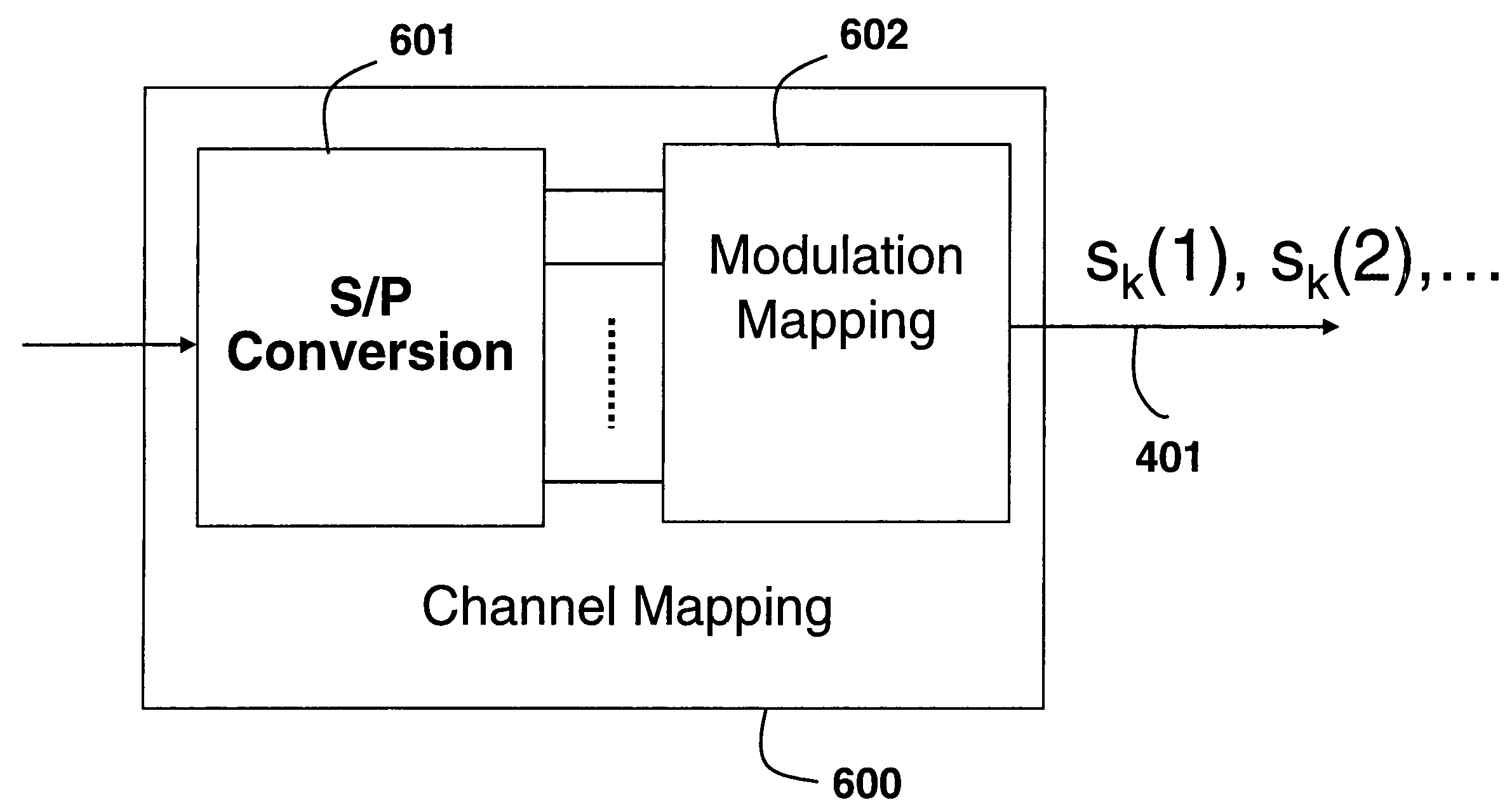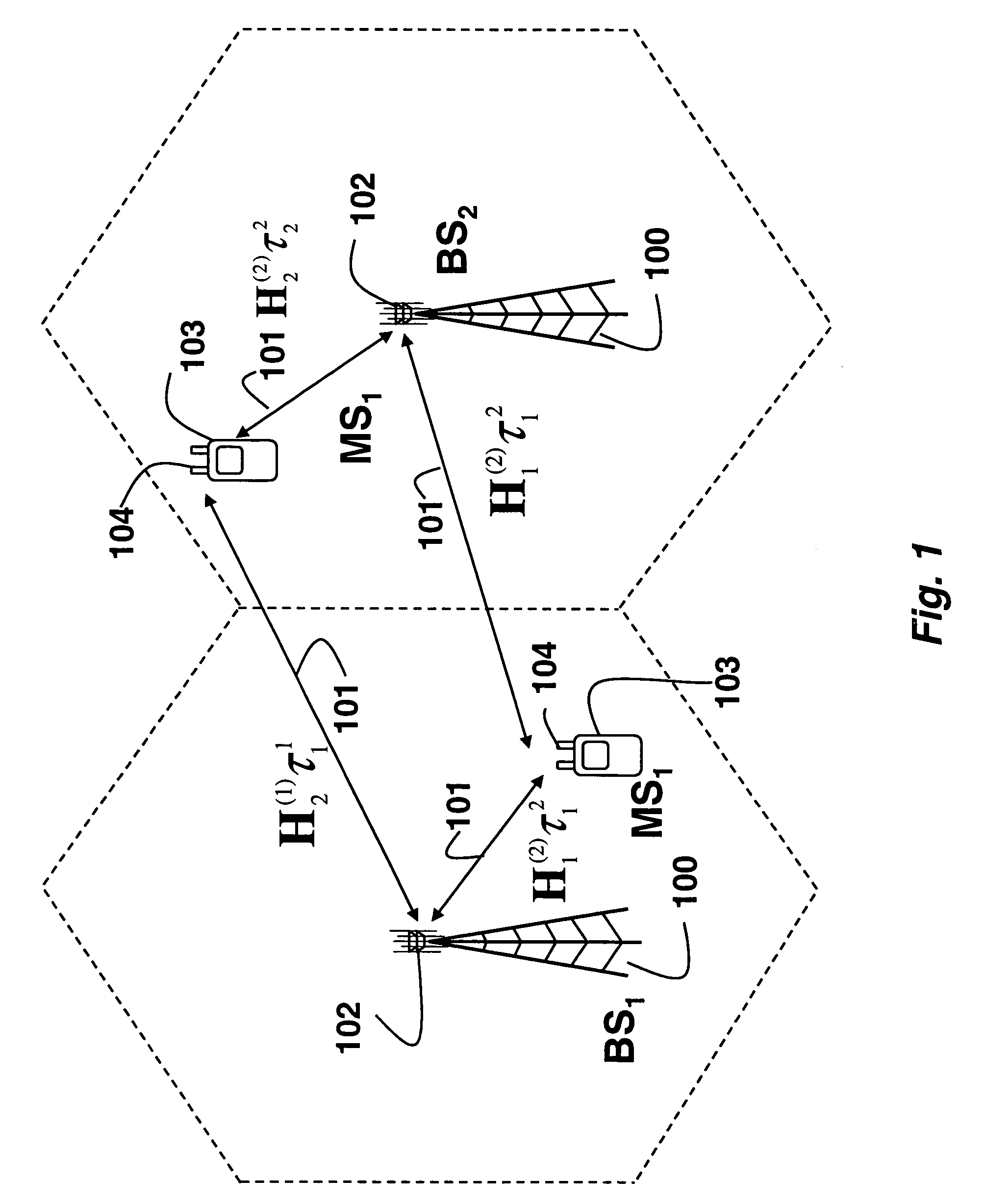System and method for transmitting signals in cooperative base station multi-user MIMO networks
a technology of cooperative base station and transmission method, applied in the field of multi-input, multi-output (mimo) communication network, can solve the problems of limiting the number of transceivers that can be handled by such networks, prohibitively complex mud for most practical networks, and limiting the number of transceivers. to achieve the effect of reducing inter-cell interferen
- Summary
- Abstract
- Description
- Claims
- Application Information
AI Technical Summary
Benefits of technology
Problems solved by technology
Method used
Image
Examples
Embodiment Construction
[0023] Network Model and Problem Formulation
[0024]FIG. 1 shows a cooperative base station, multi-user, multi-input, multi-output network according to an embodiment of our invention. The network includes B base stations (BSs) 100. Each BS has NT antennas 102, where T is greater than one. The base stations transmit signals 101 in a cooperative manner. There are also K mobile stations (MSs) 103. Each MS has NR antennas 104, where R is one or more. For example, the base station is located at a cellular site, and the mobile stations (users) are cellular transceivers (‘cell phones’). Each station can transmit or receive radio signals. The signals from the BSs partially overlap as shown in FIG. 1. That is, both MS1 and MS2 can receive signals from both BS1 and BS2.
[0025] The basic idea behind the invention is that signals transmitted by multiple base stations to a particular mobile station are synchronous with respect to each other, and asynchronous with respect to signals transmitted by...
PUM
 Login to View More
Login to View More Abstract
Description
Claims
Application Information
 Login to View More
Login to View More - R&D
- Intellectual Property
- Life Sciences
- Materials
- Tech Scout
- Unparalleled Data Quality
- Higher Quality Content
- 60% Fewer Hallucinations
Browse by: Latest US Patents, China's latest patents, Technical Efficacy Thesaurus, Application Domain, Technology Topic, Popular Technical Reports.
© 2025 PatSnap. All rights reserved.Legal|Privacy policy|Modern Slavery Act Transparency Statement|Sitemap|About US| Contact US: help@patsnap.com



